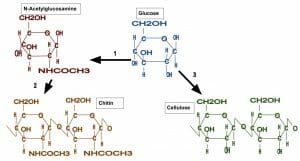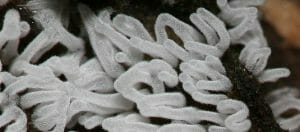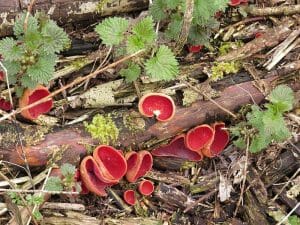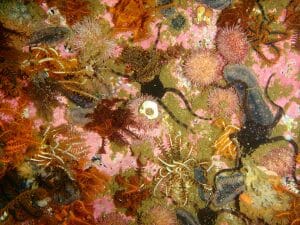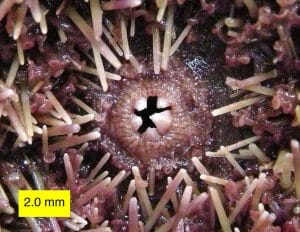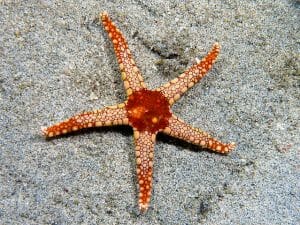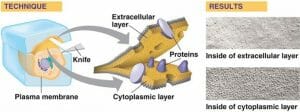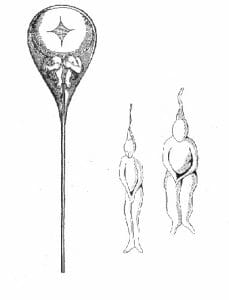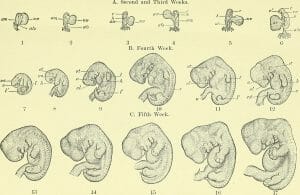Anatomy Definition
Anatomy is the branch of biology which studies how various parts of an organism are connected, and how they are related to other body parts both spatially and functionally. Anatomy has many sub-disciplines, and is used in many different fields. In general, there are two main types of anatomy: gross or macroscopic anatomy, and microscopic anatomy. However, most biology specialties require knowledge of both types of anatomy.
Types of Anatomy
Macroscopic Anatomy
Commonly called gross anatomy, macroscopic anatomy involves studying the structures and forms which can be seen on organism with the naked eye. The type of organism does not matter. A botanist may study the macroscopic anatomy of a plant, such as the shape and size of its leaves. A doctor might study the proportions of his patients, measuring their weight and height. Both of these scientists are using skills of gross anatomy.
Many branches of biology use gross anatomy to evaluate their subjects. While this is often combined with microscopic anatomy and physiology, sometimes the macroscopic anatomy is the only observable system. This definitely true of archeology and evolutionary biology. Both of these branches of biology use evidence from the fossil record to establish relationships between extinct animals. Soft tissue does not often fossilize, thus these scientists must have a comprehensive knowledge of skeletal anatomy. Different species and fossils can be compared using comparative anatomy, which recognizes similarities between specimens.
For instance, a scientist using comparative anatomy could hypothesize the evolutionary relationships between a bat, a blackbird, and an ostrich. At first glance, the blackbird and the bat may be more related based upon size. But the scientist would quickly notice that the bat is covered in hair, while the blackbird has feathers. Upon examination of the wings and their bones, the scientist would find that the bat wing resembles an outstretched hand, while the blackbird bones have fused into a large bone that extends the length of the wing, with the feathers and skin supporting the rest of the wing. Even though the ostrich cannot use its wings to fly, the structure of the bones are the same. They might be different sizes, but it is clear that the blackbird and ostrich are more closely related to each other than either is related to the bat. This simple exercise in gross anatomy provides the basis of the classification of many organisms.
Microscopic Anatomy
While gross anatomy provided the basis for many modern sciences, modern technology has revolutionized the study of microscopic anatomy. Starting with the invention of light microscopy and carrying through modern day inventions such as the electron microscope, the inner workings of cells and organisms are becoming increasingly understood. Entire new worlds of organisms, such as bacteria and single-celled eukaryotes, have been opened up for study. Cellular biology is an entire field dedicated to the study of cells, their organelles, and how they function. Microscopic anatomy is central to this study.
Microscopic anatomy covers everything from tissues, which are groups of similar cells, down to the inner workings of the molecules which direct the cell’s activities. A histologist studying muscle tissue, for example, would examine how the cells are held together in the tissue. Looking further into the cells using an electron microscope, he would see the complex arrangement of proteins in the cell which allow it to contract. He may also notice the nucleus, which contains the DNA coding for all of the proteins and products the cell produces.
Microscopic anatomy is often paired with biochemistry, molecular biology, and other disciplines to fully understand the organism or tissues being studied. Science knew for decades that cells contained many organelles. However, it was not until recent advances in DNA processing and protein analysis that the function of the many different organelles was understood. Using microscopic anatomy, scientist can also study the cells during the development of an organism. This is called embryology, and has developed into a wide field covering everything from human development to evolutionary relationships of organisms based on their developmental processes.
History of Anatomy
Anatomy is a science older than science itself. The first anatomists where the first humans, categorizing and recognizing the other organisms in their environment using skills of gross anatomy. Vision is fundamental to humans, and is the basis of our understanding of the world. As we advanced in thought and organization, early thinkers began to try to classify organisms. Without any other information, anatomy was often the only evidence available to bind organisms into groups. Aristotle was among the first to attempt serious organization of living things and used many attributes of their anatomy to group them together. His two main groups were plants and animals, two groups we can still easily distinguish today based on their gross anatomies.
Early medicine advanced quickly once the moratorium on dissection was lifted. Often frowned upon in early society, early anatomists like Leonardo Da Vinci often received scrutiny from the public or the church for their scientific inquiry. However, an understanding of the human body arose from these early pioneers, upon which is built the medical knowledge of today. Many of the first works of human and animal anatomy were published during the Renaissance. Many authors showed an advanced, if slightly lacking or skewed view of anatomy as we know it today. But, without any way to understand the workings of the body further, gross anatomy was stranded by itself.
Fast forward several hundred years and the “Father of Taxonomy” Carl Linnaeus was still mainly focused on gross anatomy as a starting point for classification. Darwin’s idea of evolution and common ancestors became accepted at the end of the 1800’s. Still, there were not many methods to evaluate the relationships between animals further. With the advent of better imaging technology, the 1900’s brought the emergence of microscopic anatomy, and really started to change biology. Once it was understood that DNA was the principle mode through which organisms inherited traits, revolutions in many disciplines occurred. Medicine saw a rapid increase in understanding, thanks to the discovery that bacteria and other microbes can cause disease. The inner workings of the cell were being pieced together, and the functions of the many different organelles understood. Many aspects of evolutionary biology were rediscovered or overturned as microscopic anatomy and DNA revealed different relationships than were once assumed. This revolution continues today, as new developments in microscopic anatomy and physiology continually reshape our understanding of organisms.
Careers
Many careers in the biological sciences require some knowledge of both gross and microscopic anatomy. Some professionals, such as a doctor, require specific anatomical knowledge of one species: humans. Human anatomy is the study of both the macroscopic and microscopic portions of the human body. Human anatomy is essential for professionals in the medical field as they must be able to discern between the many types of tissues in the body, and understand their relationship to each other. Ergonomics is the study of the physical stresses on the human body, and relies on a detailed understanding of its various components.
Other scientists focus on the anatomy of other species, or groups of species. A mammologist understands mammal anatomy, where a herpetologist understands the anatomy of reptiles and amphibians. An evolutionary biologist must understand the complex anatomies of many groups, and uses the information to understand their hereditary relationships. Archeologists study mainly gross anatomy of fossilized organisms, whereas cellular biologists and bacteriologists must rely on microscopic anatomy as their organisms are unicellular.
Degrees in anatomy can be obtained at the bachelors, graduate, and doctoral levels, with a wide variety of concentrations. Many schools offer concentrations and courses in human anatomy as a prerequisite for medical school. Other schools and programs focus on general anatomy, necessary for veterinary science, zoology, advanced biology degrees and other specialties that may rely heavily on anatomy. As a professor of anatomy, one would study and teach about the various aspects of anatomy. Many colleges have researchers who incorporate different aspects of anatomy into their research.
If you are good at anatomy or are interested in career paths with anatomy involved, try to find which branch of anatomy you enjoy the most. If gross anatomy suits you, then you may want to pursue a job as a surgeon or evolutionary biologist. If microscopic anatomy is more up your alley, you could become a microbiologist or study internal medicine. Anatomy is extremely important in many fields, especially when it is coupled with other disciplines of science, such as chemistry and physics. It can yield great insights into the world in branches of biology as far ranging as human medicine and evolution.
Reference
- De luliis, G., & Pulera, D. (2007). The Dissection of Vertebrates. Amsterdam: Academic Press.
- McMahon, M. J., Kofranek, A. M., & Rubatzky, V. E. (2011). Plant Science: Growth, Development, and Utilization of Cultivated Plants (5th ed.). Boston: Prentince Hall.
Anatomy
